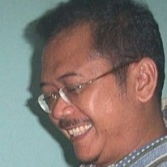International Journal of Intelligent Systems and Applications (IJISA)
IJISA Vol. 10, No. 8, 8 Aug. 2018
Cover page and Table of Contents: PDF (size: 1060KB)
Author(s)
Index Terms
Multi-character fighting, NPC, 3D simulation
Abstract
In the development of and research into multi-character fighting computer games, Non-Player Characters (NPCs) frequently seem less intelligent owing to them having a single focus. As such, multi-character fighting becomes one-on-one fighting; one character will encounter another character only once the previous opponent is defeated. This study develops a new model in multi-character fighting, in which each NPC can simultaneously fight against many characters. Following this model, each character becomes an agent that makes his own decisions. The first advantage of this model is the integration of multi-character behaviors in fights. Each character can seek out enemies/opponents, select one target opponent, avoid obstacles, approach the target opponent, change the target opponent, and then defeat the opponent or be defeated by the opponent; in other words, each character can thus fight against many opponents. All of the behaviors in the fight take place automatically. The second advantage of this model is that each character does not only focus on the opponent being targeted, but also on the other opponents surrounding him. Each character can move from one opponent to another, even when the target opponent is not yet defeated. The third advantage of this model is that each character can move to another fight cluster, thus ensuring that fights seem more dynamic. This research has experimented with the model using a 3D application that can run on personal computers or smart phones.
Cite This Paper
Sukoco, Retantyo Wardoyo, Agus Harjoko, Mochamad Hariadi, "Multi-Character Fighting Simulation", International Journal of Intelligent Systems and Applications(IJISA), Vol.10, No.8, pp.1-10, 2018. DOI:10.5815/ijisa.2018.08.01
Reference
[1]H. Shum, and T. Komura, Generating Realistic Fighting Scenes by Game Tree, Conference: SCA '06: Proceedings of the 2006 ACM SIGGRAPH/ Eurographics symposium on Computer animation, At Vienna, Austria, January 2006, ISBN: 3-905673-34-7
[2]A. Rankin, G. Acton, and M. Katchabaw, 2010, A Scalable Approach to Believable Non Player Characters In Modern Video Games, Conference: GameOn 2010, at Leicester, United Kingdom
[3]O. Szymanezyk, P. Dickinson, T. Duckett, From Individual Characters to Large Crowds: Augmenting the Believability of Open-World Games through Exploring Social Emotion in Pedestrian Groups, Proceedings of Digital Games Research Association DiGRA 2011 Conference: Think Design Play, 2011
[4]E. Carrigan, E. Kokkinara, F. Gheorghe, M. Houlier, S. Donikian, R. McDonnell, Crowd Appearance Affects Player Performance In Game Combat Scenarios, ACM., MiG’16, Proceedings of the 9th International Conference on Motion in Games, Burlingame, California — October 10 - 12, 2016, Pages 187-192, doi: 10.1145/2994258 .2994273
[5]M. Černý, C. Brom, R. Barták, M. Antoš, Spice it up! Enriching Open World NPC Simulation Using Constraint Satisfaction, Proceedings of the Tenth Annual AAAI Conference on Artificial Intelligence and Interactive Digital Entertainment (AIIDE 2014), AAAI Press, 2014, 16-22, ISBN:1577356810 978-1-57735-681-3
[6]J. Won, K. Lee, C. O’Sullivan, J. K. Hodgins, J. Lee, Generating and Ranking Diverse Multi-Character Interactions, ACM Transactions on Graphics (TOG) - Proceedings of ACM SIGGRAPH Asia 2014, Volume 33 Issue 6, November 2014, Article No. 219, doi: 10.1145/2661229.2661271
[7]H. P. H. Shum, T. Komura, M. Shiraishi, S. Yamazaki, Interaction Patches for Multi-Character Animation. ACM Transactions on Graphics, Vol. 27, No. 5, Publication date: December 8, 2008, Article No 114, doi: 10.1145/ 1457515.1409067
[8]H. P. H., Shum, T., Komura, and S. Yamazaki, Simulating Competitive Interactions Using Singly Captured Motions, Proceedings of ACM Virtual Reality Software Technology 2007, p. 65–72, doi: 10.1145/1315184.1315194
[9]M. S. Iraji, Fuzzy Agent Oriented Software Effort Estimate with COCOMO, I.J. Intelligent Systems and Applications, 2015, 08, 18-29, doi: 10.5815/ijisa.2015.08.03
[10]X. Zhao, Y. You, Y. Zhang, Evacuation Simulation of Counter-current Behavior Using Agent Model for Pedestrian Dynamics, I.J. Education and Management Engineering 2011, 4, 72-79, doi: 10.5815/ ijeme.2011.04.12
[11]S. Heliövaara, T. Korhonen, S. Hostikka, H. Ehtamo, Counterflow Model For Agent-Based Simulation Of Crowd Dynamics, Elsevier: Building and Environment, vol. 48 (2012), pp. 89-10
[12]M. Pouke, J. Goncalves, D. Ferreira, V. Kostakos, Practical simulation of virtual crowds using points of interest, Computers, Environment and Urban Systems 57 (2016) 118–129, 2016, Elsevier Ltd, doi: 10.1016/j.compenvurbsys.2016.02.004
[13]Y. Li, M. Christie, O. Siret, R. Kulpa and J. Pettré, Cloning Crowd Motions, Eurographics/ ACM SIGGRAPH Symposium on Computer Animation (2012), Pages 201-210, Switzerland, ISBN: 978-3-905674-37-8
[14]G. Hofinger, R. Zinke, L. Künzer, Human factors in evacuation simulation, planning, and guidance, Elsevier Transportation Research Procedia 2 ( 2014 ) 603 – 611, doi: 10.1016/j.trpro.2014.09.101
[15]S. Wong, Y.S. Wang, P.K. Tang, and T.Y. Tsai, Optimized evacuation route based on crowd simulation, Computational Visual Media, Vol. 3, No. 3, September 2017, 243–261, doi: 10.1007/s41095-017-0081-9
[16]T.Weiss, A. Litteneker, C. Jiang, and D. Terzopoulos, Position-Based Multi-Agent Dynamics For Real-Time Crowd Simulation, MiG’17, November8–10, 2017, Barcelona, Spain, ACM, DOI:10.1145/3136457.3136462
[17]A. Safonova, and J.K. Hodgins, Construction And Optimal Search Of Interpolated Motion Graphs, ACM Transactions on Graphics 3, 2007
[18]K. Jablonski, V. Argyriou, D. Greenhill, Crowd simulation for dynamic environments based on information spreading and agents’personal interests, Elsevier: Transportation Research Procedia 2 (2014) 412 – 417, doi: 10.1016/ j.trpro.2014.09.046
[19]R. Mankovecky, Dynamic Simulation of Virtual Agents and Obstacles in Virtual Cities, Proceedings of CESCG 2016: The 20th Central European Seminar on Computer Graphics, CESCG 2016, April 24-27, 2016, Smolenice, Slovakia, ISBN: 3950253386, 9783950253382
[20]J. Henry, H.P.H. Shum, and T. Komura, Interactive Formation Control in Complex Environments, IEEE Transactions On Visualization And Computer Graphics, Vol.20, No.2, February 2014, p 211-222, doi: 10.1109/TVCG.2013.116
[21]A.Z.A. Fata, M.S.M. Rahim, S. Kari, Autonomous Tawaf Crowd Simulation, Borneo Science 36 (2): September 2015.
[22]J. Vaillant, K. Bouyarmane, and A. Kheddar, Multi-Character Physical and Behavioral Interactions Controller, IEEE Trans Vis Comput Graph. 2017 Jun; 23(6):1650-1662. doi: 10.1109/TVCG.2016.2542067
[23]X. Xhao, M.G. Choi, T. Komura, Character-Object Interaction Retrieval using the Interaction Bisector Surface, EUROGRAPHICS 2017, The Eurographics Association and John Wiley & Sons Ltd., Volume 36 (2017), Number 2, doi: 10.1111/cgf.13112.
[24]K. Hyun, K. Lee, and J. Lee, Motion Grammars for Character Animation, EUROGRAPHICS 2016, Volume 35(2016), Number 2, Pages 103-113, doi: 10.1111/cgf.12815
[25]P. D. Kusuma, Azhari, R. Pulungan, Agent-Based Crowd Simulation of Daily Goods Traditional Markets, I.J. Intelligent Systems and Applications, 2016, 10, 1-10, Published Online October 2016 in MECS (http://www.mecs-press.org/), doi: 10.5815/ijisa.2016.10. 01
[26]T. Bosse, M. Hoogendoorn, M. C. A. Klein, J. Treur, C. N. Vanderwal, A. van Wissen, Modelling Collective Decision Making in Groups And Crowds: Integrating Social Contagion And Interacting Emotions, Beliefs And Intentions, Springer, Auton Agent Multi-Agent Syst(2013) 27:52–84, doi: 10.1007/s10458-012-9201-1
[27]F. Durupınar, U. Gudukbay, A. Aman, N.I. Badle, Psychological Parameters for Crowd Simulation: From Audiences to Mobs, IEEE Trans Vis Comput Graph. 2016 Sep;22(9):2145-59. doi: 10.1109/ TVCG. 2015.2501801
[28]A.J. Park, S. Buckley, H.H. Tsang, V. Spicer, A Decision Support System for Crowd Control Using Agent-Based Modeling and Simulation, 2015 IEEE 15th International Conference on Data Mining Workshops, doi: 10.1109/ICDMW.2015.249
[29]V. B. Zordan, J. K. Hodgins, Motion Capture-Driven Simulations That Hit And React, Proceedings of ACM SIG-GRAPH Symposium on Computer Animation, July 21-22, 2002, p. 89-96, doi: 10.1145/545261.545276
[30]J. Lee, and K. H. Lee, Precomputing Avatar Behavior From Human Motion Data, Proc of 2004 ACM SIGGRAPH/ Eurographics Symp on Computer Animation, 2004, 79–87, doi: 10.1145/1028523.1028535
[31]Kovar , L. dan Gleicher, M., 2004, Automated Extraction and Parameterization of Motions in Large Data Sets , Transactions on Graphics, 23, 3 (SIGGRAPH 2004)
[32]T. Komura, E.S.L. Ho, and R.W.H. Lau, Animating Reactive Motion Using Momentum-Based Inverse Kinematics, Computer Animation And Virtual Worlds 2005;16, John Wiley & Sons, Ltd., 2005, p 213–223, doi: 10.1002/cav.101
[33]H.P.H., Shum, Simulating Interactions Among Multiple Characters, Dissertation, University of Edinburgh, 2010
[34]O. Arikan, DA. Forsyth, JF. O’Brien, JF, Pushing People Around, Eurographics/ACM SIGGRAPH Symposium on Computer Animation, 29–31 July 2005, Los Angeles, p 59-67, doi: 10.1145/1073368.1073376
[35]M. Ishihara, T. Miyazaki, C.Y. Chu, T. Harada, R. Thawonmas, Applying and Improving Monte-Carlo Tree Search in a Fighting Game AI, Proceeding of the 13th International Conference on Advances in computer entertainment Technology, ACM, Article No 27, Osaka, Japan, November 9, 2016, ISBN 978-1-4503-4773-0, doi: 10.1145/3001773.3001797



